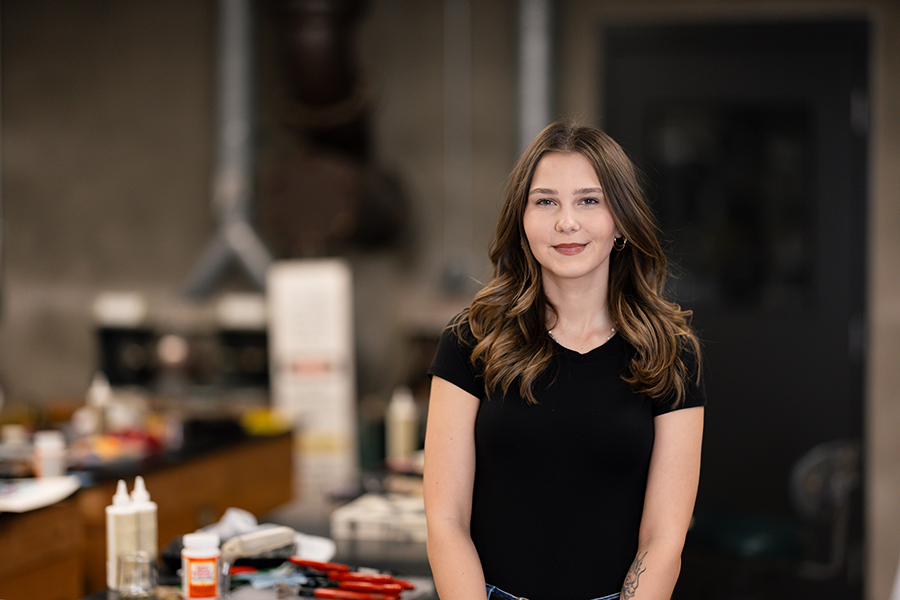TYPE
TOPIC
For Grace Beranek, choosing a university was an easy decision – it all came down to academic opportunities and the University of Wisconsin-Superior’s art therapy concentration was the perfect fit.
A Passion for Art and Psychology
“I’ve always been interested in psychology,” said Beranek, a junior from Tomahawk, Wisconsin. “Throughout high school, I took several psychology courses, and I’ve been doing art since I was young. I just combined them and thought it would be a good idea.”
Finding the right educational combination was crucial for Beranek, a visual art major with an art therapy concentration. However, she has also appreciated UW-Superior’s connected campus environment.
“I like how it’s small and supportive,” she said. “It’s easy to make good connections with professors and the people around me in class. I really like that energy.”
Mentorship and Support from Faculty
One of Beranek’s strongest mentors at UW-Superior has been Gloria Eslinger, a professor in the Visual Arts Department who specializes in art therapy.
“She’s great to work with because she makes everything easy to understand, and her coursework makes a lot of sense,” said Beranek. “She has so much experience, which shows how what you’re learning will be applied later.”
A Robust Art Therapy Curriculum
The art therapy concentration offers a robust curriculum that includes both on-campus and community learning. In the classroom, students learn how to use art materials and techniques to improve individuals’ self-esteem, well-being, and personal development. Through fieldwork in the community, students are engaging with organizations that assist people facing illnesses, trauma, or other life challenges. These experiences give students a chance to witness and participate in the application of art therapy practices through supervised, hands-on learning.
Additional courses in studio art, art history, and psychology challenge and enhance discipline-specific skills and knowledge as part of the learning process.
Overcoming Initial Intimidation
Although the in-depth educational path was initially intimidating, Beranek soon realized it was about gaining valuable experience.
“At first, I thought it was really intimidating because I’d never done therapeutic activities or work before,” she said. “It was kind of daunting, but then I realized it was more about gaining experience, and I would develop skills that I can use in real life. So that was really good.”
Expanding Learning Opportunities
Beranek points to mindfulness classes as some of her favorite experiences at UW-Superior. She has also expanded her learning opportunities by through the university’s Academic Service-Learning program, working on a project with an elderly care facility. Additionally, she’s currently working on a proposal for the Summer Undergraduate Research Program, which offers undergraduate students the chance to spend the summer working on a research or scholarly project with the support of a faculty or staff mentors.
A Foundation for the Future
“It’s great to know that what I’m learning now is something that is directly translatable to the future, including grad school or a career,” said Beranek. “I already have confidence in my skills and am sure of what I can and can’t do. I know what works best for others and myself.”
Graduates of the Bachelor of Science in art therapy program leave with practical, resume-enhancing experience and are fully prepared for careers in the mental health field or to pursue advanced degrees in art therapy or counseling.
Looking Ahead to Graduate School
Beranek already has her sights set on continuing her education in graduate school, confident that her UW-Superior education has given her a strong foundation for success.
“I feel like I’ve built a well-rounded foundation at UW-Superior, and my education has been thorough,” she said. “I know I’m going to succeed in grad school.”
